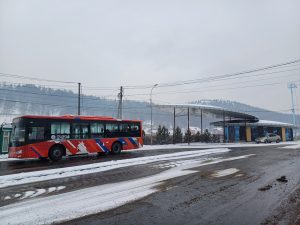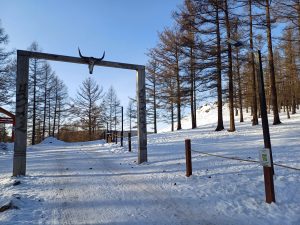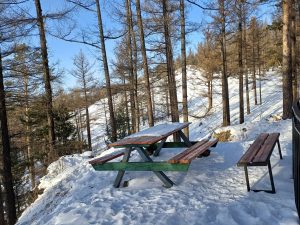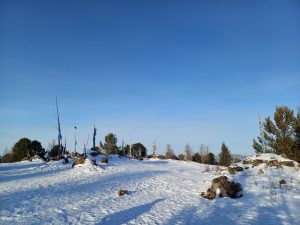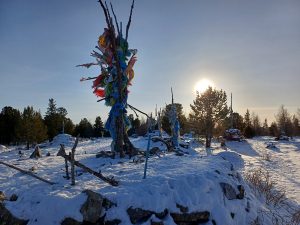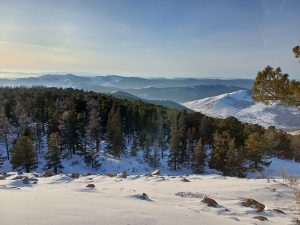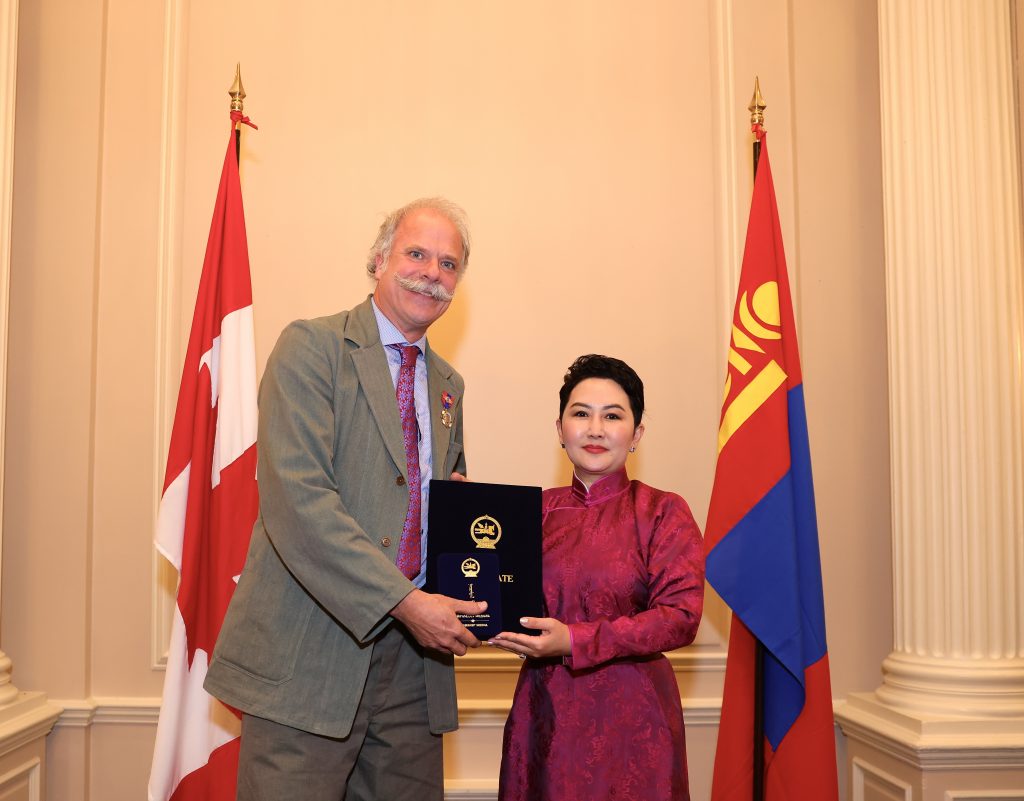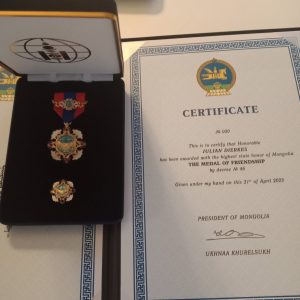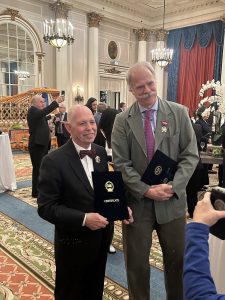By Julian Dierkes
Because few other people focus much of their attention on Mongolia, I often get asked questions that are more fundamental then I might be on other topics. In a conversation recently, sparked by the state visit of German president Steinmeier, I was asked, “What’s the one challenge that Mongolia is facing?”
Obviously, the academic déformation profesionelle is to complexify rather than simplify, and the obvious answer to that question is, “that depends”.
But, taking this challenge seriously, I would have to answer that the primary challenge for Mongolia is the development of a resource economy. While there are other pressing and important issues (democracy, inequality, climate change, herding economy, gender relations etc.), most of these are impacted directly by the shape of the resource economy.
And, the development of a resource economy is both tricky as well as complex.
Challenges to the Development of a Resource Economy
Obviously, Mongolia is not alone in facing this challenge. It is important to note that many other jurisdictions are grappling with this challenge across the Global South, but also in OECD countries, take for example the resource economies of Canadian provinces, but also places like Alaska or Norway. Some of these jurisdictions have not been that successful in terms of populations benefitting from resource developments, others – like Norway – may not be all that relevant for their experience.
Some common challenges in the quest to rely on natural resources to power economic, political and social development:
- distribution of benefits
- attracting investors
- reliance on resources vs diversification
- environmental impacts
- fluctuations in world prices
- corruption
Mongolia has been grappling with these since the prospect of a resource economy arose in the late 1990s.
The path of development has been meandering. The most pointed example of this is the Oyu Tolgoi mine. To many observers, esp. foreign observers, this meandering path has delayed the flow of revenues from that mine to state coffers which is expected to enable most initiatives toward developments that the government might embrace. At the same time, Mongolians (policy-makers and the population) have learned more and more about the resource sector, and policy choice are now much better understood for the delays that the meandering path has caused.
But, many questions remain. Along the lines of the challenges listed above, some of these questions include:
- state ownership vs taxation, investment of revenues vs distribution to the population, management of debt
- need for international investors vs desire to maintain as much control over resources as possible
- benefitting from the bounty of resources vs recognizing that resources will ultimately be exhausted
- local impacts of resource projects vs national benefits, environmental damage (potential and actual) caused by resource projects
- stabilizing revenue flows despite dependence on global prices and developments
- licensing regimes, protection of revenue flows
Impact of the Resource Economy on other Issues
Politics and Democracy
Many of the decisions about a resource economy have to be made with the input of the population, especially in a democracy. Yet, expectations also have to be managed, something that has been a significant challenge to governments of the past decade. While some specific challenges are recognized, political parties have not aligned along the lines of choices about these challenges. There is no party that makes a coherent and consistent case for more state involvement, for example. Yes, the MPP seems to be generally more inclined toward greater state involvement than the DP and KhUN, but this has not been a consistent position that has been carried out by MPP governments and the need for foreign investment often appears to clash with state involvement.
Questions around the distribution of benefits also have to be politically mediated. The recent decision to bundle direct election seats in parliament into regional groupings is just one indication of how the challenge around the distribution of benefits is shaping politics. Here, the expectations for some kind of compensation of local communities impacted by mining clashes with a unitary state that seeks to distribute benefits to all Mongolians. These benefits are also easily politicized as is visible in the recent payment of a Tavan Tolgoi dividend to Mongolians where the timing of this dividend six months before a parliamentary election is no accident.
Inequality
No doubt, mining has created wealth in Mongolia. Ignoring distributional inequality for a moment, per capita GDP has grown from $560 in 2002 to $4,400 in 2012 and $5,045 in 2022 (current US$, Worldbank). While this income has benefitted some segments of society disproportionately, some of it at least has benefitted all Mongolians. Note the shift in countryside transportation as an example over this time, from horses to motorcycles to cars. Yet, significant inequality remains. There is an urban poor population, especially but not only in Ulaanbaatar, there are threats to the herding economy, and there is a lack of economic development outside of the capital and mining projects, that remains a challenge in this regard. However, any attempts to combat inequality by a social welfare state or redistribution will rely on revenues from the mining sector.
Climate Catastrophe
Clearly, Mongolia is being impacted by the global climate catastrophe without contributing significantly to it (despite the horrendous air pollution in Ulaanbaatar and other urban centres caused by the continued burning of fossil fuels). Apparent impacts include desertification, deterioration of grasslands (also caused by overgrazing of course), increases in violent weather events, esp. precipitation, melting of permafrost, changes in plant and animal species’ habitat and range, etc.
Since COVID, Mongolia’s economy has come to rely even more on coal exports to China. This is where resources are contributing to the climate catastrophe through the supply of lignite and by thus continuing to enable a fossil fuel-focused Chinese economy. But despite the castigation of Mongolian governments by international organizations on this matter, they face the challenge of entrenched corporate elites that have stakes in the coal industry, and the need to generate revenues to address other pressing challenges.
In terms of likely developments, this is an area where we might think of the development of a resource sector in terms beyond minerals. Mongolian sunshine is likely to turn into such a resource that will resemble the mining industry in the space that industrial-scale solar projects will take up, in the need for huge investments, but also the possibility of significant revenues.
Herding Economy
Herding remains central to Mongolian society at a symbolic level, but also as a livelihood for a significant portion of the population. The herding economy intersects crucially with other challenges that Mongolia is facing, for example the impact of the global climate catastrophe. The herding economy is also changing rapidly. There are no political voices that are advocating for an exclusive focus on development of the herding economy. Initiatives focused on the potential of meat production for export to diversify away from minerals have not been successful. While many other projects (regional development, educational opportunities, infrastructure, etc.) are linked to the herding economy, any investments in the sector are largely dependent on revenue flows from the resource economy and policy decisions at the central government level to prioritize rural development.
International Relations
To the extent that Mongolia remains threatened in its existence by its somewhat overbearing two neighbours, this threat is also increasingly tied in with the development of the resource economy. Russia is not only a threatening presence to the North but it is also a competitor as a source of resources on a global market and Mongolia’s primary source of energy imports. China dominates Mongolia in terms of exports and imports, even the further development of the resource economy will not change that. Yes, foreign policy, particularly the efforts to balance constructive relations with the two neighbours with more global efforts to intensify relations with Third Neighbours, is made somewhat independently of economic developments, but this policy continues to be interwoven tightly with the resource economy.
A different kind of resource economy is also on the horizon, that is rooted in the development of Mongolia’s potential to produce alternative energy, esp. solar. That trajectory will shore up Mongolia’s energy security, but it will also require foreign investment and domestic in ways that will not be dissimilar to the minerals-based resource economy.
Implications for the 2024 Parliamentary Election
If my sense of the development of the resource economy as a primary challenge is correct, one might expect that answers to this challenge might be the most prominent element in the competition of political parties and candidates for votes this June.
Yet, this strikes me as unlikely. As I mentioned above, political parties have not developed a coherent policy program focused on the resource sector and views on its development have not emerged as the primary political cleavage that one might expect given the primacy of this sector.
Instead, the election will largely be fought on the merits of individual politicians and a pragmatic assessment of the record of the MPP government. As is the case for the past 20 years, policy on the resource sector will thus likely continue to be made on the basis of specific challenges as they present themselves, dominated by individuals who occupy particularly powerful positions, yet their power will also continue to be checked by the fragmentation of power.

 Follow
Follow